Navigating the dynamics of group hiking adventures can be as tricky as maneuvering through a dense, unmarked forest. Struggling with leading or participating in such ventures? Trust me, you’re not alone.
Drawing from wisdom gleaned from extensive research and insightful tips from expert resources like the Wilderness Leadership Course – I’ve mapped out 17 essential strategies to enhance your leadership skills and bolster group cohesion on hikes.
This blog post is your compass, guiding you in setting objectives, streamlining task organization, resolving trail conflicts and ensuring safety measures are consistently met. With these practical keys in hand, we’re sure to unlock remarkable outdoor expeditions together!
Key Takeaways
- Teamwork is essential in hiking as it makes tasks easier, keeps us safe, and fosters camaraderie among group members.
- Effective leadership skills include setting clear objectives, organizing logistics, and distributing responsibilities within the hiking group.
- Encouraging open communication, resolving conflicts using the “CFOR” method, and leading by example help manage group dynamics on the trail.
Understanding Group Dynamics in Hiking
In hiking, understanding group dynamics is crucial for success as it promotes teamwork, builds camaraderie, and fosters effective communication among members.
Importance of teamwork
Teamwork plays a big role in hiking. It makes tasks easier and quicker. When all group members work together, we can reach our goal faster. Teamwork also makes us safer on the trail.
If one person gets hurt or lost, others are there to help. But teamwork means more than just working together. We must share the same goal and vision for our hike. This ties us together and keeps everyone focused on the task at hand.
Building camaraderie
Being part of a hiking team is like having an extra family. We build camaraderie to enjoy and trust each other. This bond helps us work better together on the trail. It’s just as important as bringing enough water and food.
How do we make this strong bond? We share stories and laugh around the campfire. We also help each other out when times get tough on the hike. Support from your teammates can be a big boost when you’re feeling tired or scared.
In doing so, camaraderie grows even stronger in our hiking group!
Fostering communication
Talking and listening work well in a hiking group. This is called fostering communication. As a leader, you can help the group share thoughts. You need to talk about dangers on the hike.
The tool “CFOR” can help with this. It stands for Clarify, Facilitate, Organize, and Resolve. It helps solve problems in the group. Advisors also play a role here. They boost good team ties and fix fights inside the group.
So speak up, listen well and use CFOR to keep everyone safe on your hike!
Essential Leadership Skills for Hiking Groups
To ensure success in hiking groups, it is crucial to possess essential leadership skills such as establishing clear objectives, organizing logistics, and distributing responsibilities.
Establishing clear objectives
Setting clear objectives is crucial for the success of a hiking group. When planning a hike, it’s important for the leader to clearly state the goals and objectives of the trip. By doing this, everyone in the group knows what they are working towards and can stay focused on achieving those goals.
Additionally, having clear objectives helps to create a sense of purpose and direction within the group, which can enhance motivation and teamwork. Remember that objectives should be specific, measurable, achievable, relevant, and time-bound (SMART).
By establishing clear objectives from the start, you can set your hiking group up for success and ensure that everyone is on the same page throughout the journey.
Organizing logistics
When organizing logistics for a hiking group, it’s important to plan ahead and make sure everything is in order. This includes arranging transportation to the hiking location, booking accommodations if necessary, and ensuring everyone has the required gear and supplies.
Keeping the group size small can make logistics easier to manage and have less impact on the environment. As a hiking leader, I always watch for opportunities to help my team overcome challenges and provide any necessary support or guidance along the way.
By being prepared and organized, we can have a smooth and enjoyable hiking adventure together.
Distributing responsibilities
Distributing responsibilities is crucial for effective leadership in a hiking group. As the leader, I make sure that each member has specific roles and duties to contribute to our adventure.
This helps us work together as a team and ensures that everyone feels accountable for their tasks. By distributing responsibilities, I can effectively manage the organization of our hike, coordinate communication between members, and make informed decisions about risk management.
It’s my responsibility to supervise and support each individual in their role to ensure a successful hiking experience.
Guide to Hiking Group Dynamics and Leadership
As a hiking enthusiast, I want to share some important tips on how to navigate group dynamics and leadership during hikes. Having a guide can help you handle any problems that may arise and ensure everyone has a positive experience.
The AMC Outdoor Leader Handbook is an excellent resource that offers techniques for organizing group hikes and dealing with issues along the way. Uncommon Path suggests trading off leadership roles within the group, which can help manage dynamics during hikes.
Additionally, the Leadership Manual emphasizes that as the leader, it’s important to set the tone by sharing relevant information and creating a positive environment. By following these guidelines from the Guide to Leading a Hike, you can be better prepared to handle any challenges that come your way while leading a hiking group adventure.
Effective Planning for Group Hiking Adventures
When planning a group hiking adventure, it is crucial to set realistic goals, create a detailed itinerary, and consider the abilities and preferences of each individual in the group.
Setting realistic goals
Setting realistic goals is a crucial step in planning for group hiking adventures. It’s important to start small and set attainable goals based on each individual’s starting point.
By choosing objectives that are challenging yet manageable, everyone in the group can feel a sense of accomplishment. It’s also essential to consider the limitations of inexperienced hikers and avoid pushing them too hard.
To ensure success, it’s advisable to define specific and measurable achievements for the hike. This way, progress can be tracked and celebrated along the way. Effective planning strategies can help in setting realistic goals that align with each hiker’s abilities and aspirations for the upcoming year while still dreaming big.
Creating a detailed itinerary
Creating a detailed itinerary is important for effective planning of group hiking adventures. Here are some key factors to consider:
- Start slow and gradually increase the difficulty level to ensure everyone’s safety and enjoyment.
- Keep the group size small for easier management, less disruption, and minimal impact on the environment.
- Plan the purpose of the hike, whether it’s exploring a specific trail or reaching a particular destination.
- Consider all necessary details such as distance, elevation gain, and terrain difficulty when selecting the route.
- Use resources like the “Philmont Treks 2022 Itinerary Guide” to help choose a suitable itinerary based on abilities and preferences.
- Discuss potential routes with the group and create a shared objective before embarking on the hike.
Considering individual abilities and preferences
Planning group hiking adventures requires careful consideration of each individual’s abilities and preferences. It is important to remember that everyone has different skills and capabilities when it comes to outdoor exploration.
By taking into account these factors, we can ensure a more successful and enjoyable experience for everyone involved. Whether it’s setting realistic goals, creating a detailed itinerary, or choosing the right trail difficulty level, tailoring the plan to accommodate individuals’ needs is key.
This way, we can encourage active participation and create a positive hiking environment where everyone feels comfortable and capable of contributing their best.
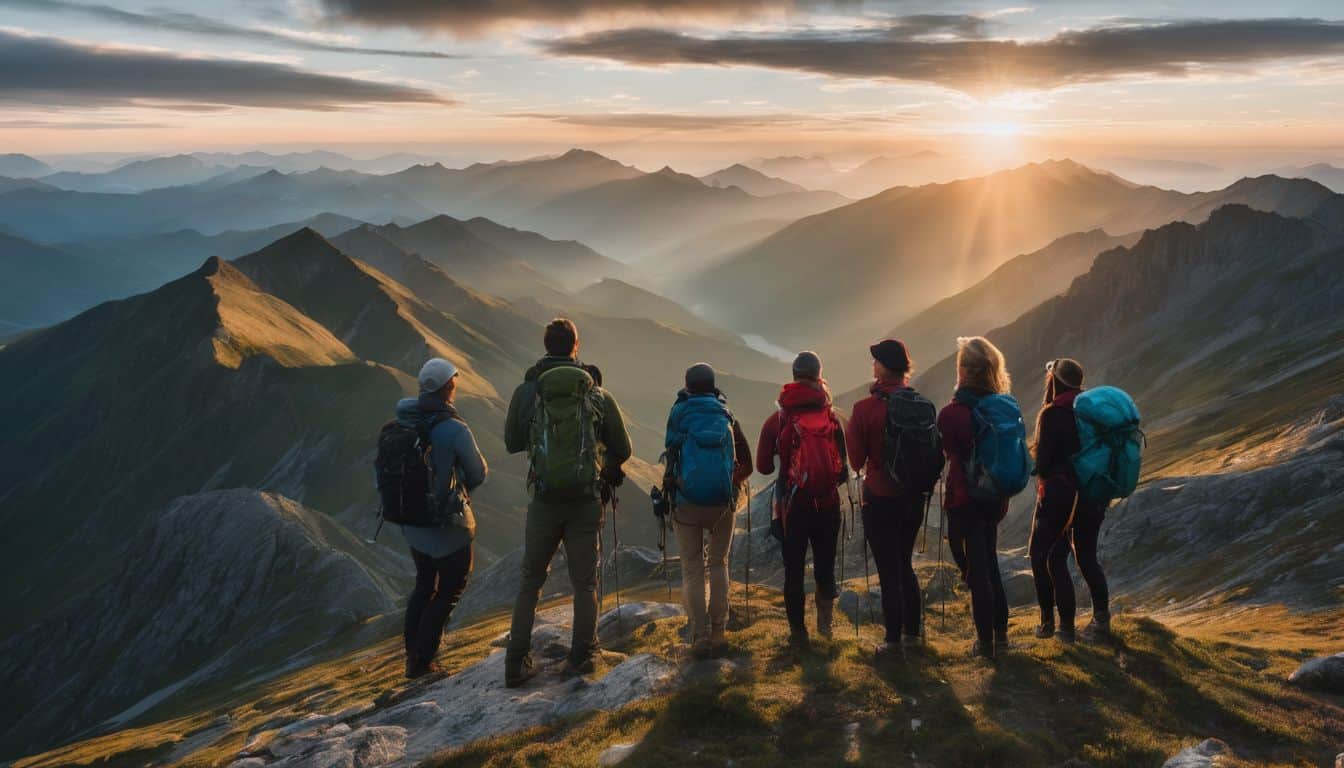
Managing Group Dynamics on the Trail
Encourage open communication, resolve conflicts, and lead by example to effectively manage group dynamics on the trail.
Encouraging open communication
Encouraging open communication is vital when it comes to managing group dynamics while hiking. It helps everyone feel involved and connected, making the hiking experience more enjoyable for all.
As a leader, I make sure to create a safe and welcoming environment where everyone feels comfortable expressing their thoughts and concerns. By promoting active listening and valuing each person’s opinion, we can foster better understanding among group members.
One effective way to encourage open communication is by using the “CFOR” acronym, which stands for Clarify, Feedback, Offer suggestions, and Request input. This approach ensures that conversations are clear, respectful, and collaborative.
I also facilitate discussions about potential dangers on the trail so that everyone stays informed and prepared.
When diverse groups come together for a hike, I emphasize our common interests and values in order to promote dialogue and cooperation. Instead of focusing on our differences, we celebrate what brings us together: our love for nature and adventure.
This helps break down barriers and allows us to truly enjoy each other’s company while exploring the great outdoors.
Resolving conflicts
Conflicts can sometimes arise when hiking in a group, but it’s important to address them properly. One useful method for resolving conflicts is the “CFOR” approach, which stands for: communication, feelings, options, and resolution.
First, open up communication by allowing everyone involved to express their thoughts and concerns. Then, acknowledge and validate each person’s feelings to create understanding. Next, brainstorm different options or solutions together as a group.
Lastly, work towards reaching a resolution that satisfies everyone involved. Conflict is normal and can actually lead to better solutions if managed effectively. So remember to use the CFOR method when conflicts arise on your hiking adventures!
Leading by example
When it comes to managing group dynamics on the trail, leading by example is crucial. It means being a role model for others and setting the tone for collaboration and teamwork. By demonstrating positive behaviors such as respecting others, following safety guidelines, and showing enthusiasm for hiking, you can inspire your fellow hikers to do the same.
Leading by example also involves actively participating in group activities and being willing to take on responsibilities. When everyone sees your commitment and dedication, they are more likely to follow suit and contribute positively to the group dynamic.
Remember, your actions speak louder than words when it comes to leading by example in hiking group dynamics and leadership.
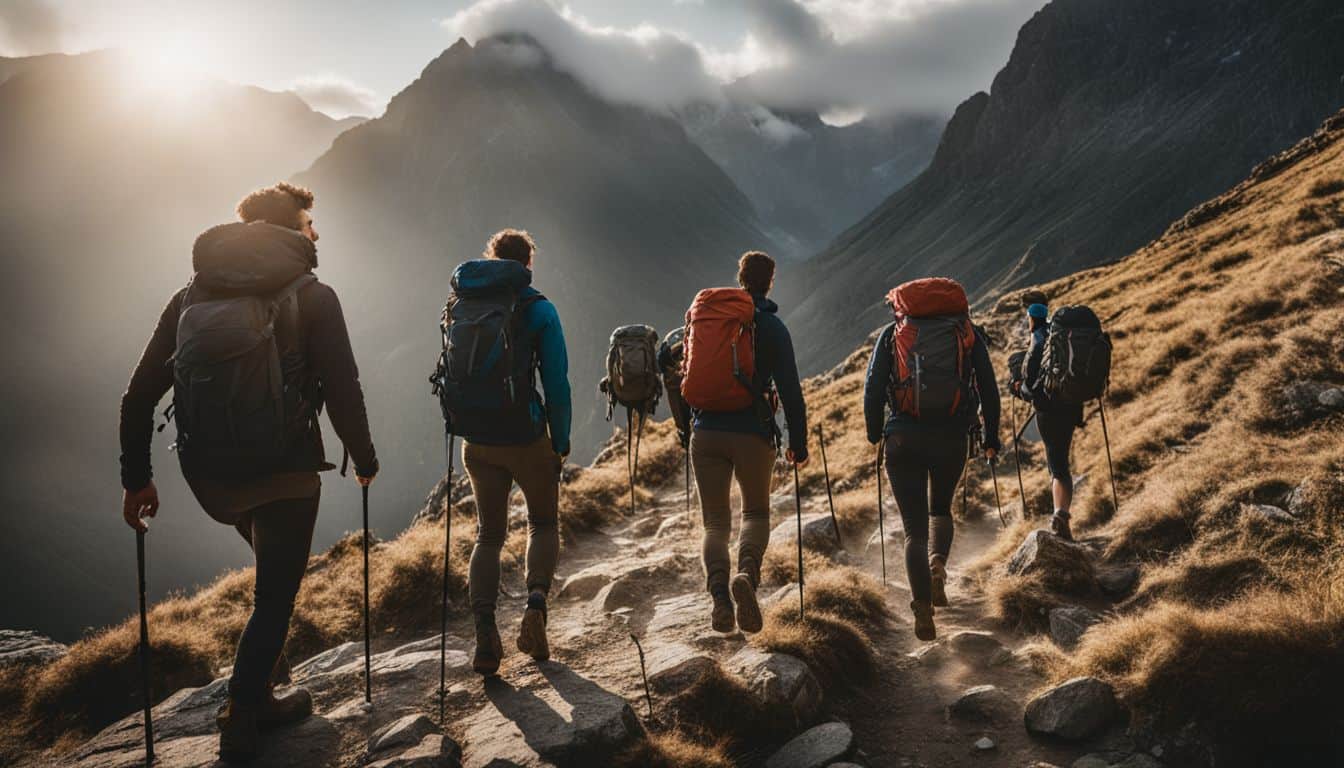
The Role of the Hike Leader
The hike leader plays a crucial role in facilitating positive group dynamics, ensuring safety, and motivating the group. If you want to learn more about effective leadership in hiking and achieve success on your adventures, keep reading!
Facilitating positive group dynamics
As a hike leader, one of my key responsibilities is to facilitate positive group dynamics. This means fostering a sense of unity and collaboration among the members of the hiking group.
By creating an environment where everyone feels comfortable and included, we can enhance teamwork and communication on the trail.
To achieve this, I encourage open communication among group members. I make sure that everyone has a chance to share their thoughts and ideas during our hikes. This not only allows us to make collective decisions but also helps build trust and camaraderie within the group.
Resolving conflicts is another crucial aspect of facilitating positive group dynamics. Whenever disagreements arise, I address them promptly and fairly. By encouraging respectful dialogue and finding common ground, we can maintain harmony within the group.
Leading by example is also essential in fostering positive dynamics. As a hike leader, I strive to demonstrate qualities like positivity, resilience, and empathy throughout our adventures.
Ensuring safety
As a hike leader, my top priority is the safety of every member in the group. I have the authority and responsibility to ensure that we have a safe hiking experience. This means checking the trail and weather conditions before setting out on our adventure.
It also means making sure that everyone has the necessary equipment and is prepared for any challenges we may encounter along the way. Safety is always my main concern, and I take it seriously to keep all participants safe during our hikes.
Motivating and inspiring the group
As the hike leader, my role is not just to guide the group and ensure their safety but also to motivate and inspire them throughout the journey. I believe that sharing our love for hiking and exploring can be a powerful way to encourage others to participate.
I always make sure to communicate the benefits of hiking, such as experiencing nature, improving physical fitness, and reducing stress levels. By highlighting these advantages, I help create excitement and enthusiasm within the group.
Ultimately, my goal is for everyone to enjoy the hike while feeling motivated and inspired by the beauty of nature surrounding us.
Tips for a Successful Group Adventure in the Backcountry
Create a shared objective to keep everyone focused and motivated throughout the hiking journey.
Creating a shared objective
Creating a shared objective is really important when you hike with a group. It helps everyone work together and achieve their goals. Before starting the hike, it’s a good idea to gather everyone and talk about what you want to achieve as a team.
This could be reaching the summit of a mountain, completing a certain distance, or even just enjoying nature together. When everyone is on the same page and working towards the same goal, it creates a sense of camaraderie and makes the experience more enjoyable for everyone.
So take some time to discuss and establish your shared objective before you hit the trail!
Organizing tasks and responsibilities
When organizing a group hiking adventure, it’s important to establish clear tasks and responsibilities. Here are some tips to help with this:
- Divide tasks: Assign specific roles and responsibilities to each member of the group. This can include things like trail navigation, meal planning, gear organization, or first aid.
- Delegate effectively: Make sure each person understands their assigned task and feels capable of completing it. Provide any necessary training or guidance.
- Establish timelines: Set deadlines for completing certain tasks to ensure everything gets done in a timely manner. This could include packing gear by a certain time, setting up camp before sunset, or cooking meals at designated times.
- Communicate openly: Encourage everyone in the group to communicate regularly about their progress on assigned tasks. This helps keep everyone accountable and ensures that no important tasks are overlooked.
- Backup plans: In case of unexpected circumstances or emergencies, have backup plans in place for each task or responsibility. This ensures that the group can adapt and overcome challenges as they arise.
Implementing a leader rotation system
To ensure a successful group adventure in the backcountry, it is important to implement a leader rotation system. This means that each member of the hiking group takes turns being the designated leader for the day.
By rotating leadership responsibilities, everyone gets a chance to make decisions and guide the group. It also promotes shared responsibility and teamwork among the members. Assigning a leader of the day (LOTD) helps in ensuring smoother communication, effective decision-making, and organized coordination during the hike.
So, consider implementing a leader rotation system for your next hiking adventure to enhance group dynamics and promote collaborative leadership.
Celebrating achievements
One of the most fulfilling aspects of a successful group adventure in the backcountry is taking the time to celebrate your achievements. As hikers, we often push ourselves to reach new heights and conquer challenging trails.
It’s important to recognize and appreciate these accomplishments as a team. Whether it’s reaching a summit, completing a long-distance hike, or overcoming personal challenges along the way, celebrating our achievements fosters a sense of camaraderie and motivates us for future adventures.
So gather around the campfire, share stories and laughter, and raise a toast to all that you have accomplished together on your hiking journey!
Ensuring Safety during Hunting Season
During hunting season, it is crucial to educate group members about the potential risks and safety precautions. Wearing bright colors and staying on designated trails can greatly reduce the chances of accidents.
Read more to learn how to keep your hiking group safe during hunting season.
Educating group members
I believe that educating group members is an essential aspect of ensuring safety and preparedness during hiking adventures. As a hike leader, it’s crucial to provide information on wilderness safety, outdoor ethics, hunting regulations, and wildlife encounters.
By sharing this knowledge with the group, we can promote responsible behavior and minimize risks. It’s also important to encourage hikers to attend seminars or training sessions like the Philmont Preparedness Seminar for additional resources and preparation tips.
Together, we can create a safer and more enjoyable hiking experience for everyone involved.
Wearing bright colors
During hunting season, it’s important to prioritize your safety while hiking. One way to do that is by wearing bright colors like blaze orange. Not only does this help you stand out among the natural surroundings of brown and green, but it also makes you less likely to be mistaken for game by hunters.
Wearing a blaze orange hat, vest, or coat can significantly increase your visibility on the trails. So remember, when you’re heading outdoors during hunting season, make sure to wear bright colors like orange or yellow to ensure your safety.
Staying on designated trails
Staying on designated trails during hunting season is crucial for our safety as hikers. By sticking to these established paths, we can minimize the chances of encountering hunters and reduce any potential risks.
Designated trails are safer because hunters are more likely to expect people on them, making it less likely for accidents or misunderstandings to occur. It’s highly recommended that we avoid going off the designated trails altogether during hunting season to further decrease the risk of coming across hunters in areas where hunting is permitted.
Let’s prioritize our safety by staying on these designated routes and enjoying a worry-free hiking experience.
Importance of Marking Paddling Gear
It is crucial to mark your paddling gear to prevent loss or confusion and ensure safety on the water.
Preventing loss or confusion
When hiking in a group, it’s important to prevent loss or confusion. To do this, we need to make sure our paddling gear is properly marked. This helps us keep track of our equipment and prevents it from getting lost or mixed up with others’ gear.
By marking our gear with bright colors or reflective tape, we can easily identify what belongs to each person in the group. This ensures that everyone has their own equipment and avoids any confusion or mix-ups on the trail.
Additionally, keeping an eye out for each other and regularly checking if everyone has their gear can also help prevent loss or confusion. It’s all about staying organized and taking simple steps to ensure that everything stays where it should be during our hiking adventures.
Ensuring safety on the water
When you’re enjoying water sports or activities like kayaking, canoeing, or paddleboarding, it’s important to prioritize safety. One of the most crucial steps is to always wear a life jacket or personal flotation device (PFD).
This simple piece of equipment can save your life if you fall into the water unexpectedly. Additionally, carrying a whistle or another sound-producing device can help attract attention in case of an emergency.
Remember, accidents can happen even to experienced outdoor enthusiasts, so taking these safety precautions should be a top priority when participating in water-based adventures.
Conclusion on Hiking Group Dynamics And Leadership
In conclusion, mastering hiking group dynamics and leadership is a key ingredient to achieving success on the trails. By fostering teamwork, communication, and effective planning, hikers can create a positive and empowering environment for everyone involved.
With these 17 tips in mind, you’ll be well-equipped to lead your hiking group to new heights! So lace up your boots, gather your team, and let the adventure begin!
FAQs on Hiking Group Dynamics And Leadership
1. Why are group dynamics important in hiking?
Group dynamics are important in hiking because they help ensure everyone’s safety, promote teamwork and cooperation, and enhance the overall experience of the hike.
2. What is leadership in hiking?
Leadership in hiking involves guiding and coordinating the group, making decisions, ensuring everyone’s well-being, and providing direction during the hike.
3. How can I improve my leadership skills for hiking?
You can improve your leadership skills for hiking by developing good communication skills, being knowledgeable about the trail and outdoor safety, fostering a positive group dynamic, and leading by example.
4. What should I do if conflicts arise within a hiking group?
If conflicts arise within a hiking group, it is important to address them calmly and respectfully. Encourage open communication, listen to all perspectives, find common ground or compromises when possible, and seek assistance from other experienced hikers if needed.
5. Are there any specific tips for successful group dynamics while hiking?
Some tips for successful group dynamics while hiking include setting clear expectations before the hike starts, assigning roles or responsibilities to each member based on their strengths or interests (e.g., navigator), practicing effective communication throughout the hike (e.g., using hand signals), encouraging supportiveness among members,
and celebrating achievements together along the way

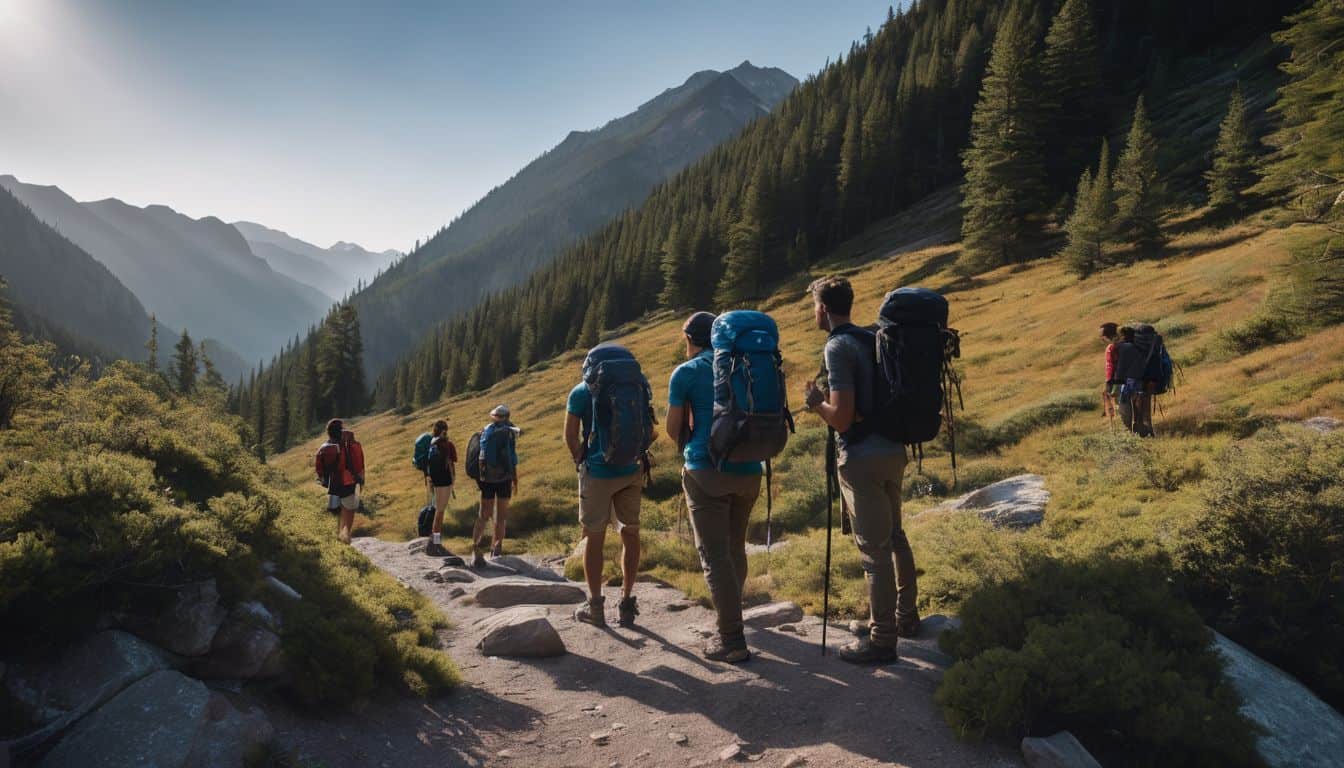
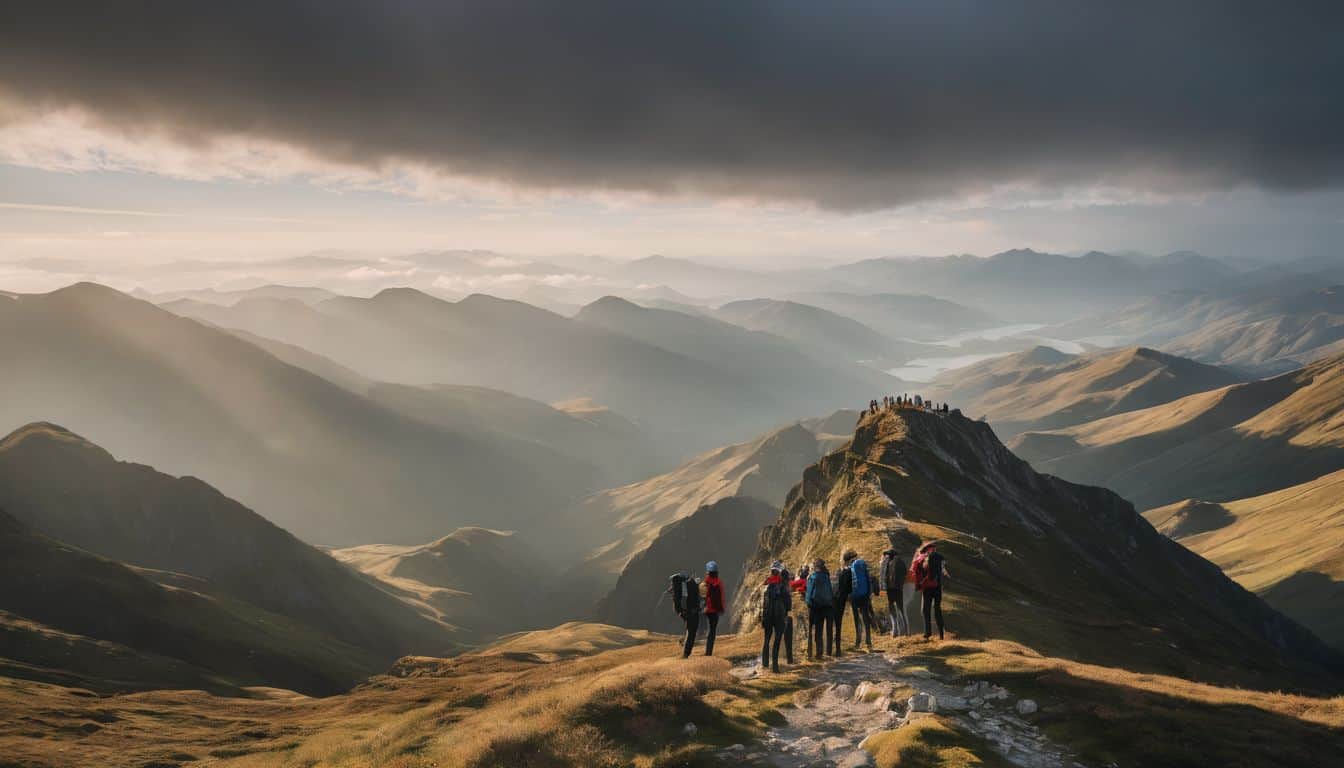
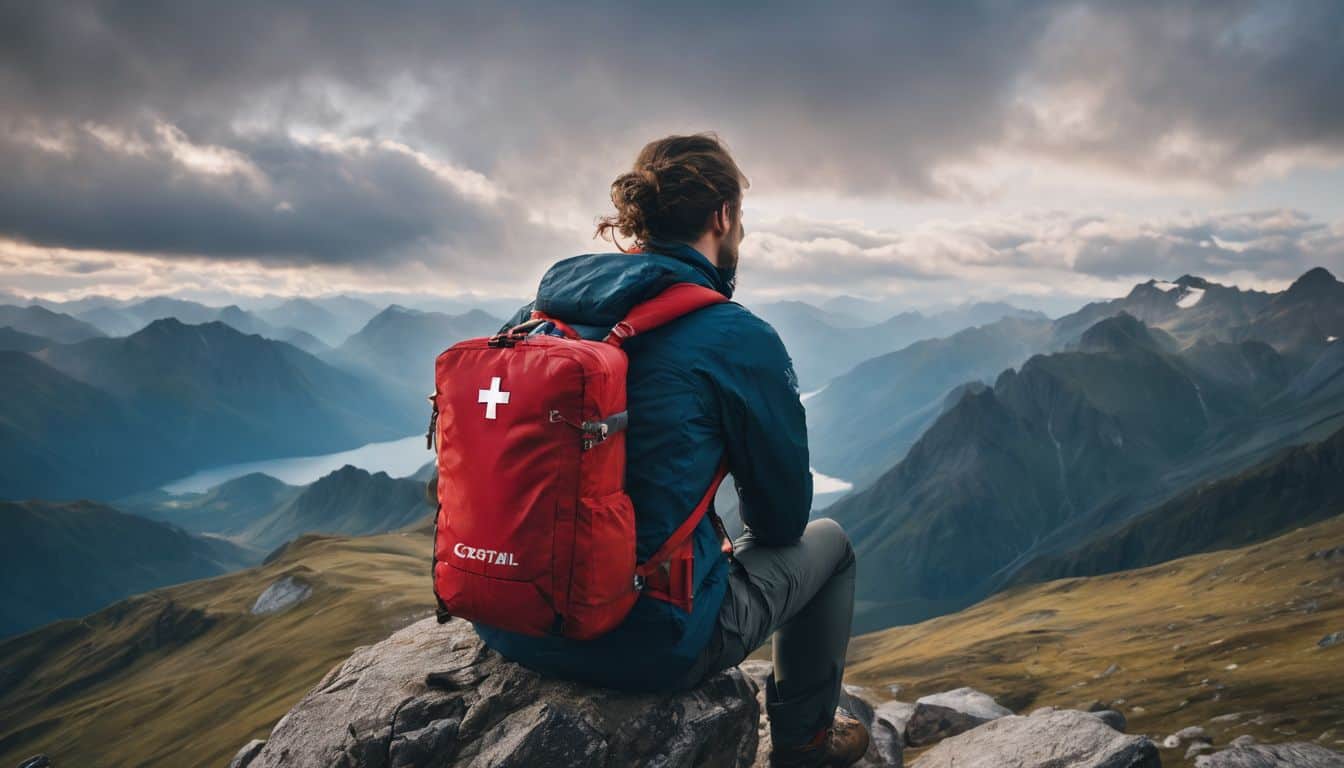
Leave a Reply